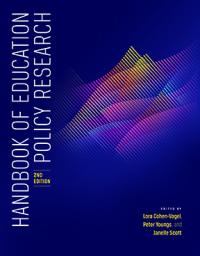Community and Alternative School Policies
AERA members: Please enter your coupon code in the shopping cart coupon discount field.
Community and Alternative School Policies
Karen Hunter Quartz
Jorge Ruiz de Velasco
Marisa Saunders
Milbrey W. McLaughlin
Click here to view and purchase Handbook of Education Policy Research, 2nd Edition
Title information
Community and second-chance alternative schools embrace the Deweyan notion of universal education as a collective good while also challenging traditional ideas of what counts as learning and who decides what counts as learning. In this chapter, the authors argue for this claim, guided by a federal policy reform chronology that has shaped alternative public schooling. Their aim is to analyze the democratic purposes of alternative models of public schooling, arguing against the idea that alternatives should be conceived as escape valves or market choices to exit the dominant system of schools. The authors also frame community and second-chance alternative schools as broad youth-sector approaches to promoting positive, culturally responsive youth development and argue that alternative schools should challenge traditional conceptions (often rooted in racist or xenophobic ideologies) of teaching and learning. The authors elaborate this argument for democratic, youth-sector, pedagogical alternatives to the dominant system of public schooling in a final section devoted to the “steady work” of school reform—the effort and democratic engagement it takes to fundamentally change complex public institutions, and specifically, teaching and youth development practices. They highlight research on two community and second-chance alternative school contexts to cull lessons and next steps for educational policy and practice.
Keywords: community schools; alternative schools; democratic education; social justice

